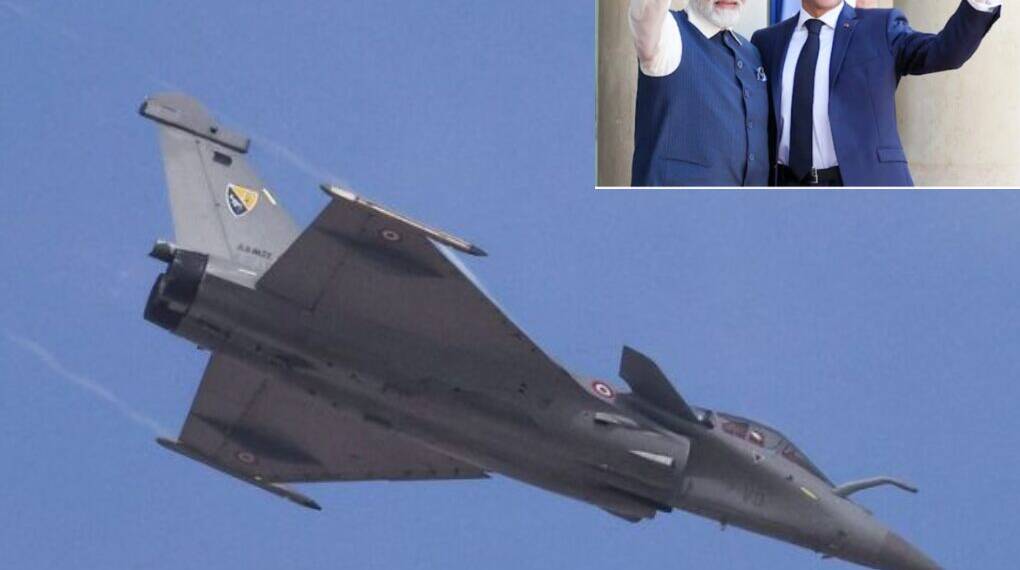A new report from the U.S.-China Economic and Security Review Commission has ignited a fresh geopolitical debate, alleging that China orchestrated a coordinated disinformation campaign aimed at undermining the export prospects of France’s Rafale fighter jet. The alleged campaign followed India’s deployment of the aircraft during a brief but intense four-day conflict with Pakistan earlier this year.
According to the bipartisan commission’s findings, Beijing used fake social media networks, AI-generated images, and even video-game visuals to circulate fabricated evidence claiming that Pakistan’s Chinese-origin J-10 fighter jets had shot down multiple Indian Rafales. The report states that the narrative was amplified to damage Dassault Aviation’s global market standing and boost sales of Chinese fighters abroad.
China, however, has flatly rejected the allegations. Foreign ministry spokesperson Mao Ning dismissed the report as “false” and accused the commission of harboring “ideological bias” against Beijing. India’s foreign ministry has so far not commented.
A Battle for Influence in the Global Fighter Jet Market
The commission’s report comes at a sensitive moment for the international defence industry. Earlier this month, Ukraine signed a letter of intent to acquire up to 100 Rafale jets over the next decade, marking one of the largest potential export deals for the French aircraft.
In parallel, the Rafale’s reputation took a hit after Pakistan claimed that its J-10 jets downed at least one Indian Rafale during the conflict. Although independent verification remains scarce, the claim gained traction online — something the U.S. commission argues was not accidental but deliberately amplified by Chinese cyber networks.
By portraying the Rafale as vulnerable against its own products, Beijing allegedly sought to strengthen the global appeal of the J-10C, which it has aggressively marketed in Asia and Africa as a cost-effective, modern combat platform.
The report also states that despite only “three Indian jets” reportedly being downed in the conflict — and none conclusively proven to be Rafales — the narrative was pushed as a major Chinese success. Indonesian officials, according to the commission, were even persuaded to pause their ongoing Rafale procurement and reconsider Chinese offers.
The U.S. Angle: Market Competition and Strategic Commentary
Although the commission directly accuses China of circulating fabricated content, U.S. media outlets have also been criticized in Indian defence circles for amplifying Pakistan’s claim without sufficient verification. Some analysts argue that portraying the Rafale as underperforming benefits the U.S. defence sector, which is currently pitching the F-35 to numerous countries seeking advanced fifth-generation fighters.
With Russia and France presenting lower-cost alternatives like the Su-57 and Rafale, Washington and Beijing both face competition in a global market valued at hundreds of billions of dollars. In this context, perceptions of combat performance — even if unverified — become powerful tools of influence.
The defence market, experts note, is not just shaped by technology but by narrative. A single claim about an aircraft being shot down can sway procurement decisions, especially in countries seeking proven wartime capability.
Proxy War or Propaganda Opportunity?
The commission cautioned against labeling the India–Pakistan clash a “proxy war” engineered by China, stating that such a conclusion would overstate Beijing’s direct role. However, it added that China clearly “leveraged the conflict” to test its weapons and promote them internationally.
China’s growing influence in Pakistan’s military modernisation — from fighters to drones and air defence systems — has already reshaped South Asian strategic dynamics. The alleged disinformation campaign underscores how modern geopolitical competition extends beyond borders into digital spaces where perception can be manipulated at scale.
The controversy highlights an emerging reality: in global defence markets, information warfare is becoming as crucial as battlefield performance. As China, the U.S., Russia, and France continue competing for influence, aircraft like the Rafale, J-10, Su-57, and F-35 are not just machines — they are symbols of national power, strategic alignment, and technological prestige.
As more countries evaluate fighter acquisitions, the struggle to shape narratives — online and offline — is only set to intensify.








